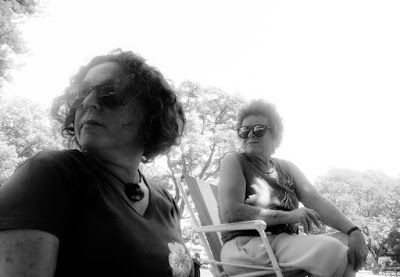Visions of half-sleep
| Image by Shaun Tan |
I sent them one of my micro stories (they call them Flashers) and now it's up on their website (cool!). One of the editors described my story as hypnogogic, which sent me scurrying to the dictionary. In a nut-shell, hypnogogia refers to that transitional state of consciousness from wakefulness to sleep.
Digging further I read that creative types have been know to use this half-sleep state to draw inspiration:
"Dali said that he had learned the “slumber with a key” trick from the Capuchin monks and that other artists he knew also used it. Albert Einstein “napped” this way as well, as have other inventors and thinkers who believed this nap inspired their ideas and creativity. These men were unknowingly taking advantage of what scientists today call the “hypnogogic” nap, when the mind, before it reaches Stage 2 sleep, unlocks free flowing creative thoughts." Lifehacker.com
I didn't use Dali's key method to write the story. Rather, I began with a writing exercise where I focussed on the sound and rhythm of the words, rather than their meaning. Then I left it for a week and went back to edit a number of times. I didn't play around with it too much because I liked the initial impulse and energy of the word order. What I ended up with is very short story (just 130 words). I don't know how I'd go writing something longer in this style. However, I do enjoy the visionary quality, the phantasm - the creation of something that's both real and imaginary. These liminal spaces are fun to occupy, with sometimes surprising results.
Like to read the story? Here it is: Colonisation
Happy writing.
C x


Comments